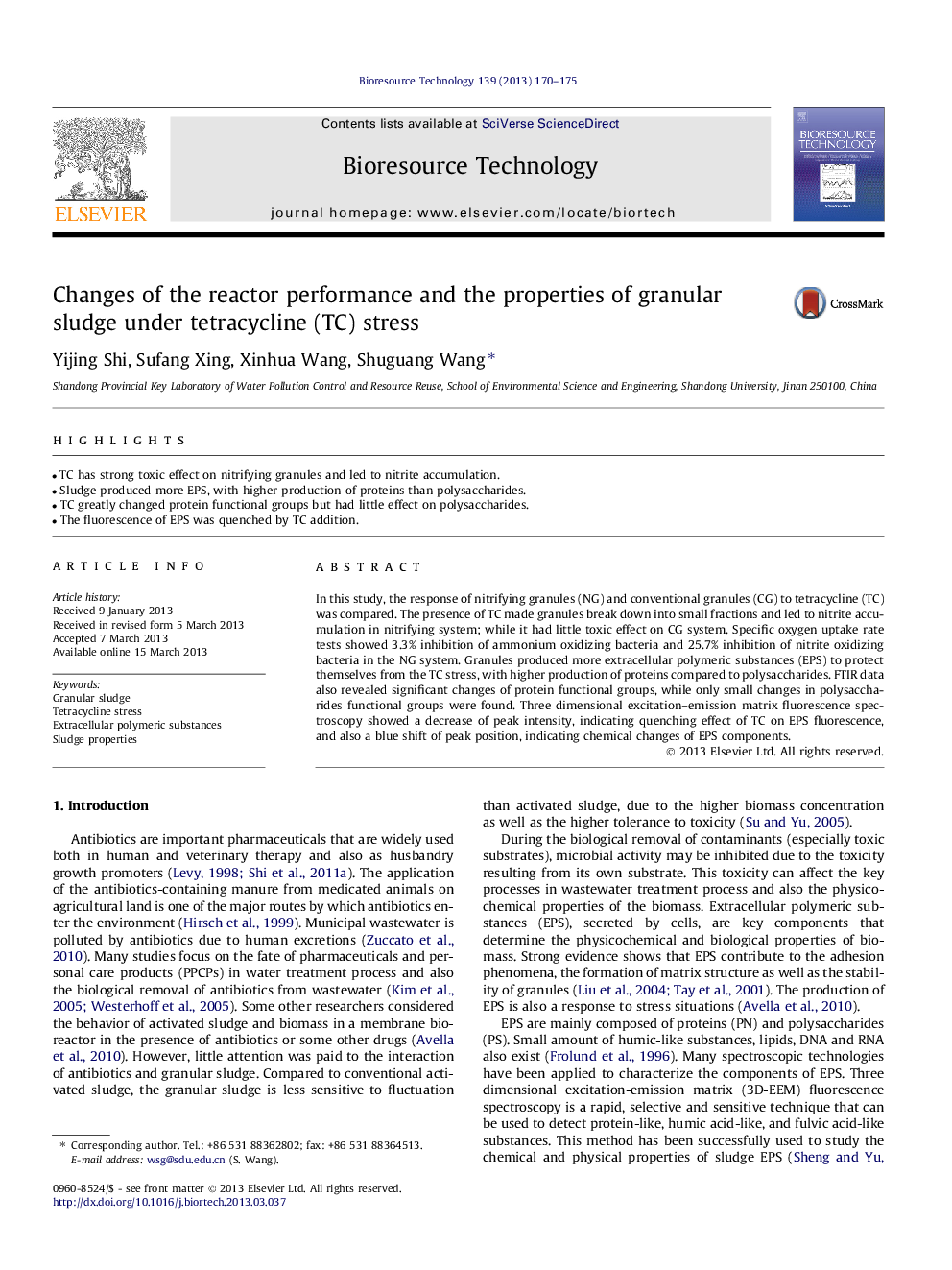| Article ID | Journal | Published Year | Pages | File Type |
|---|---|---|---|---|
| 7082310 | Bioresource Technology | 2013 | 6 Pages |
Abstract
In this study, the response of nitrifying granules (NG) and conventional granules (CG) to tetracycline (TC) was compared. The presence of TC made granules break down into small fractions and led to nitrite accumulation in nitrifying system; while it had little toxic effect on CG system. Specific oxygen uptake rate tests showed 3.3% inhibition of ammonium oxidizing bacteria and 25.7% inhibition of nitrite oxidizing bacteria in the NG system. Granules produced more extracellular polymeric substances (EPS) to protect themselves from the TC stress, with higher production of proteins compared to polysaccharides. FTIR data also revealed significant changes of protein functional groups, while only small changes in polysaccharides functional groups were found. Three dimensional excitation-emission matrix fluorescence spectroscopy showed a decrease of peak intensity, indicating quenching effect of TC on EPS fluorescence, and also a blue shift of peak position, indicating chemical changes of EPS components.
Related Topics
Physical Sciences and Engineering
Chemical Engineering
Process Chemistry and Technology
Authors
Yijing Shi, Sufang Xing, Xinhua Wang, Shuguang Wang,
